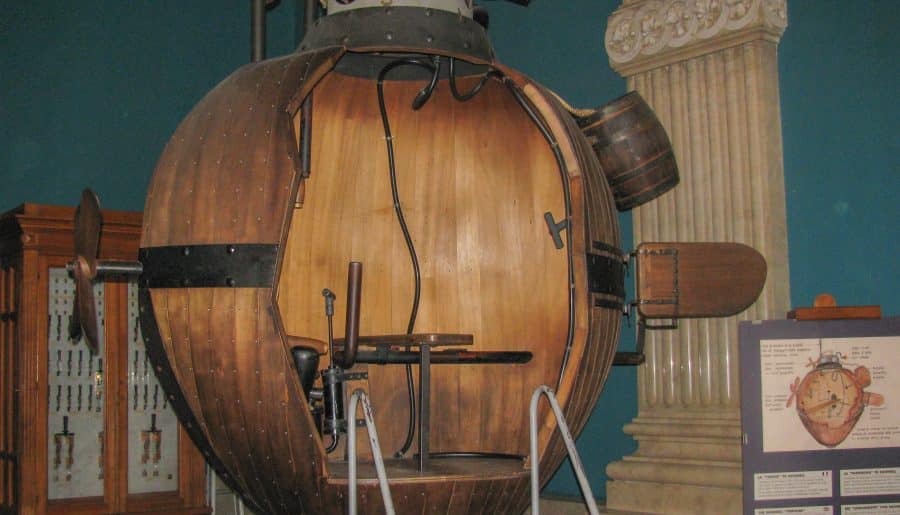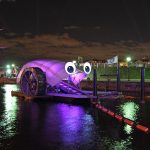Submersibles are incredible innovations; they can be deployed from the ship to the sea, diving underwater and staying submerged for a long time.
In today’s world, these remarkable underwater crafts help humans better understand the marine environment and its life. It’s commonly used for exploration and research purposes, including searching for shipwrecks and documenting ocean information for analysis.
But did you know that submersibles were even used for war combat in the 1700’s?
Yes. You read that right.
The first combat submarine, Turtle, was a turtle-shaped one-man vessel propelled underwater by a single operator. It was used against the Royal Navy (United Kingdom’s naval warfare force) during the American Revolutionary War.
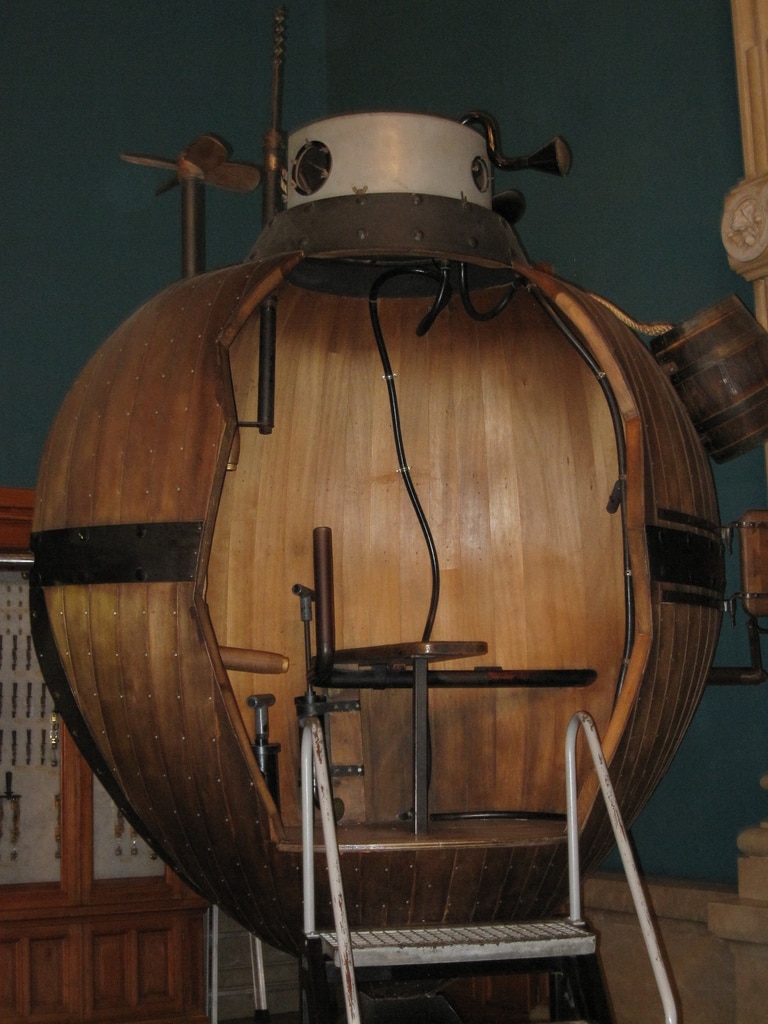
The Turtle Submersible was built in 1775 by David Bushnell, an American inventor, medical doctor, teacher, patriot, and one of America’s first combat engineers.
While still a student at Yale College, Bushnell had studied and experimented with how to make gunpowder explode underwater. Then by early 1775, he already succeeded in creating a method for detonating underwater explosives.
In April 1775, during Bushnell’s last year at school, the outbreak of the American Revolution began. News on the Battles of Lexington and Concord made him restless, thinking of various ways to fight British warships.
He thought there must be a new way to lift the British naval blockade and fight the British ships, and it was from beneath the water.
Bushnell went home to Saybrook after graduating from Yale in July 1775. He started working on his experimental craft that could allow its operator to dive beneath the water, stay there, and deliver underwater timed mines or explosives to other watercraft.
Bushnell built a unique turtle-shaped vessel that would fit one operator, enclosing him in two upper tortoise shells joined together, hence its name – Turtle.
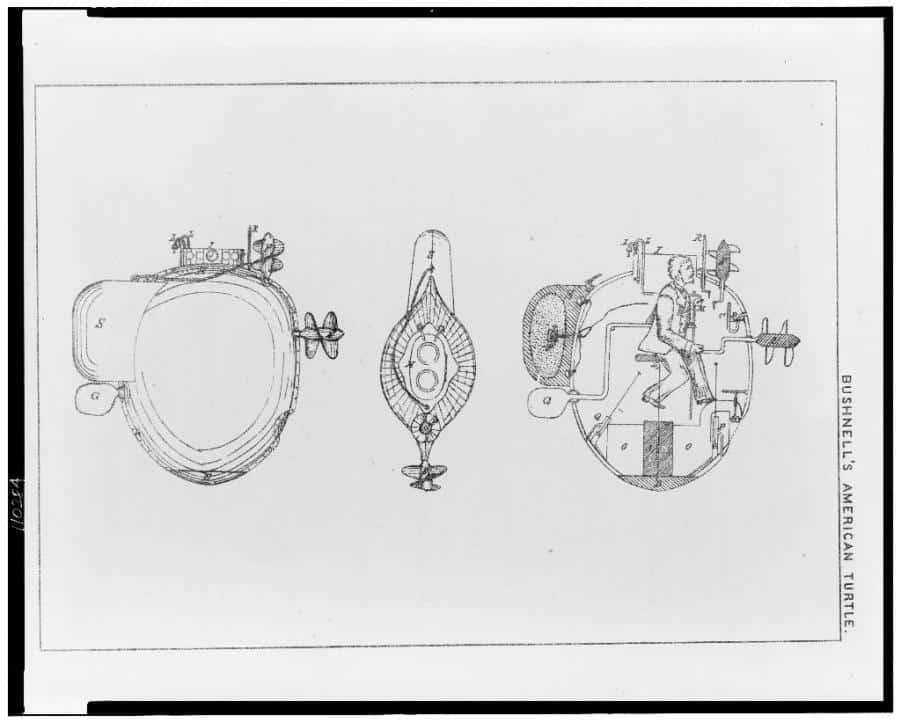
He had help from the local clockmaker and inventor Isaac Doolittle, his brother Ezra Bushnell, and a carpenter from Saybrook Phineas Pratt.
Doolittle was also known for creating the instruments, including the Turtle brass and moving parts, valves, and forcing pumps, needed for the watercraft.
According to the original specification, Turtle was about 10 feet long, 6 feet tall, and about 3 feet wide. The submarine’s hull was made of oak and bound by heavy wrought-iron hoops.
Inside the vessel, the operator would sit on a chair in the middle and use ballast that allows water into the hull so the vessel submerges. Then, it ascends by pumping the water out by hand.
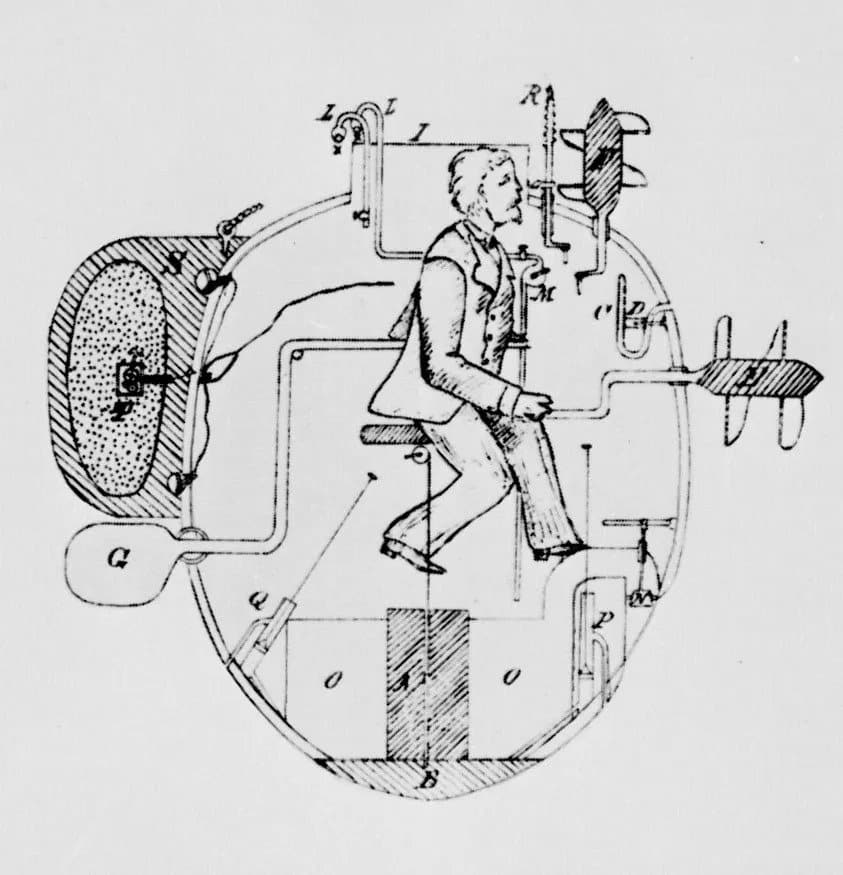
The Turtle submersible would also use pedal-powered propellers to propel the boat forward and backward. The vessel also only uses light from the small windows in the hatch. Moreover, the air would enter the chamber through two snorkels, limiting the air inside.

Bushnell also envisioned the vessel would have about 30 minutes of breathable air, so it was designed to travel on the surface with its hatch and windows above water. It would also only submerge to attach the explosive and avoid detection.
Putting the Turtle to the Test
Bushnell tested the submarine repeatedly. His brother Ezra trained to become its pilot until he could maneuver it with perfect dexterity.
Turtle made its first and most famous contact with the British in September 1776. However, a misfortune happened. Bushnell’s brother, Ezra, fell ill with a debilitating fever and could not participate.
David Bushnell applied for volunteers to operate the Turtle to Brigadier General Samuel Parsons. Three people were chosen and trained for two weeks.
After two weeks of training, Sgt. Ezra Lee became Turtle’s new operator. He prepared to attack the H.M.S. Eagle, the flagship of the blockade squadron, in New York harbor on the night of September 6.
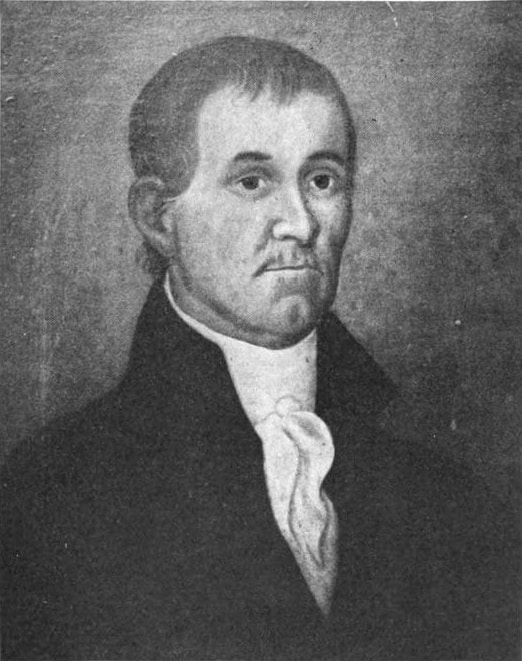
The vessel was armed with a magazine of gunpowder that was to be attached to the hull. Lee took about two hours to reach his goal, as it was difficult propelling the submersible into position with the hand-operated controls and foot pedals.

Unfortunately, the plan failed, as Lee hit metal instead of wood, so he couldn’t drill into the ship’s hull. He then was forced to leave and propel back to land, abandoning the timed explosive. The abandoned explosive detonated in less than an hour.
The Turtle made several attempts against British warships in New York Harbor in 1776. However, all of them were unsuccessful. Then, on October 9, 1776, the submarine was lost while aboard her transport ship, as the British sank it.
Historians believe the colonists were able to recover it, but its eventual fate is unknown.
